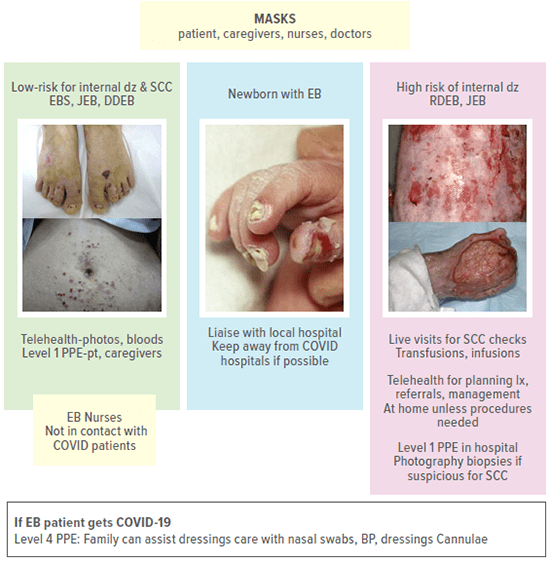International Experts Develop Guidelines for Best Treatment of Epidermolysis Bullosa During the COVID-19 Pandemic
Published July 2020 | Journal of the American Academy of Dermatology
For patients with epidermolysis bullosa (EB), a genetic condition that causes the skin to blister and erode very easily, the COVID-19 pandemic exacerbated physical and emotional challenges. To promote the best outcomes for these patients, a team of international experts outlined how to care for them during the pandemic.
In patients with EB, minor injuries and friction—such as rubbing or scratching—cause blisters to form. Depending on the type of EB, blisters and erosions may form on the skin, but other organ systems are also affected. The disease can range from a minor inconvenience to completely disabling or even fatal.
Due to severe systemic complications, patients with EB are a particularly vulnerable population. In addition to concerns about the effects of COVID-19 on the body, patients and families face fears about how they will be perceived on admission to hospitals. Because patients with severe forms of EB often appear frail and emaciated, healthcare workers unfamiliar with the condition could underestimate their likelihood of survival—affecting decisions about distribution of ventilators and other limited resources.
By responding to a questionnaire, 44 experts from five continents agreed on appropriate care standards for EB during the pandemic. Modifications include teledermatology rather than in-person visits, testing by local laboratories, and special ICU protocols to protect the skin and airway.
“We hope to share more detail on the protocols our Cincinnati Children’s Epidermolysis Bullosa Center has developed, and eventually be able to assess how they affect outcomes for our patients,” says co-author Anne Lucky, MD. “We are partnering with specialists as well as the Anderson Center at Cincinnati Children’s to continually update our processes and maximize our successes.”
Management of Epidermolysis Bullosa (EB) During COVID-19 Pandemic





